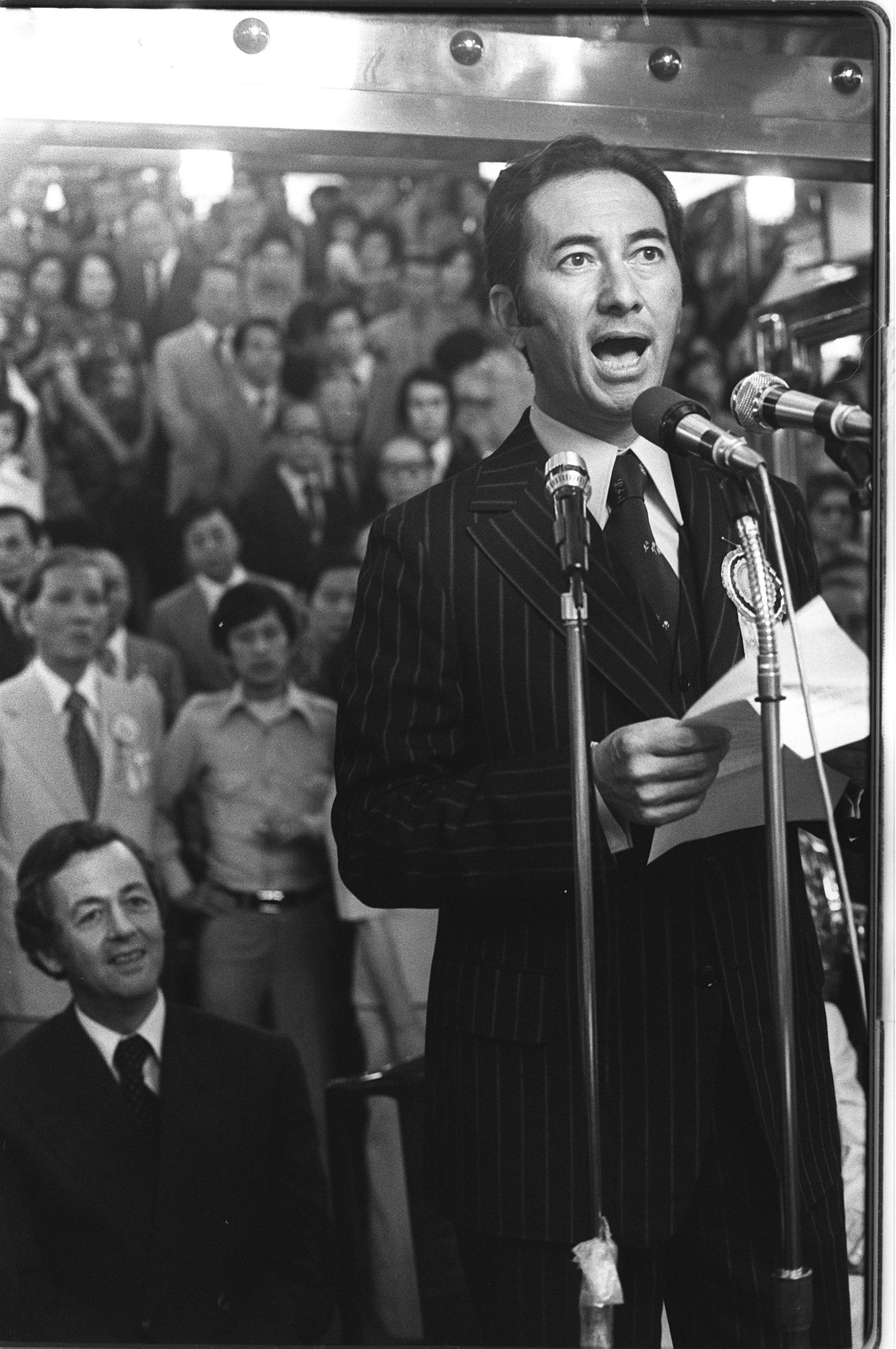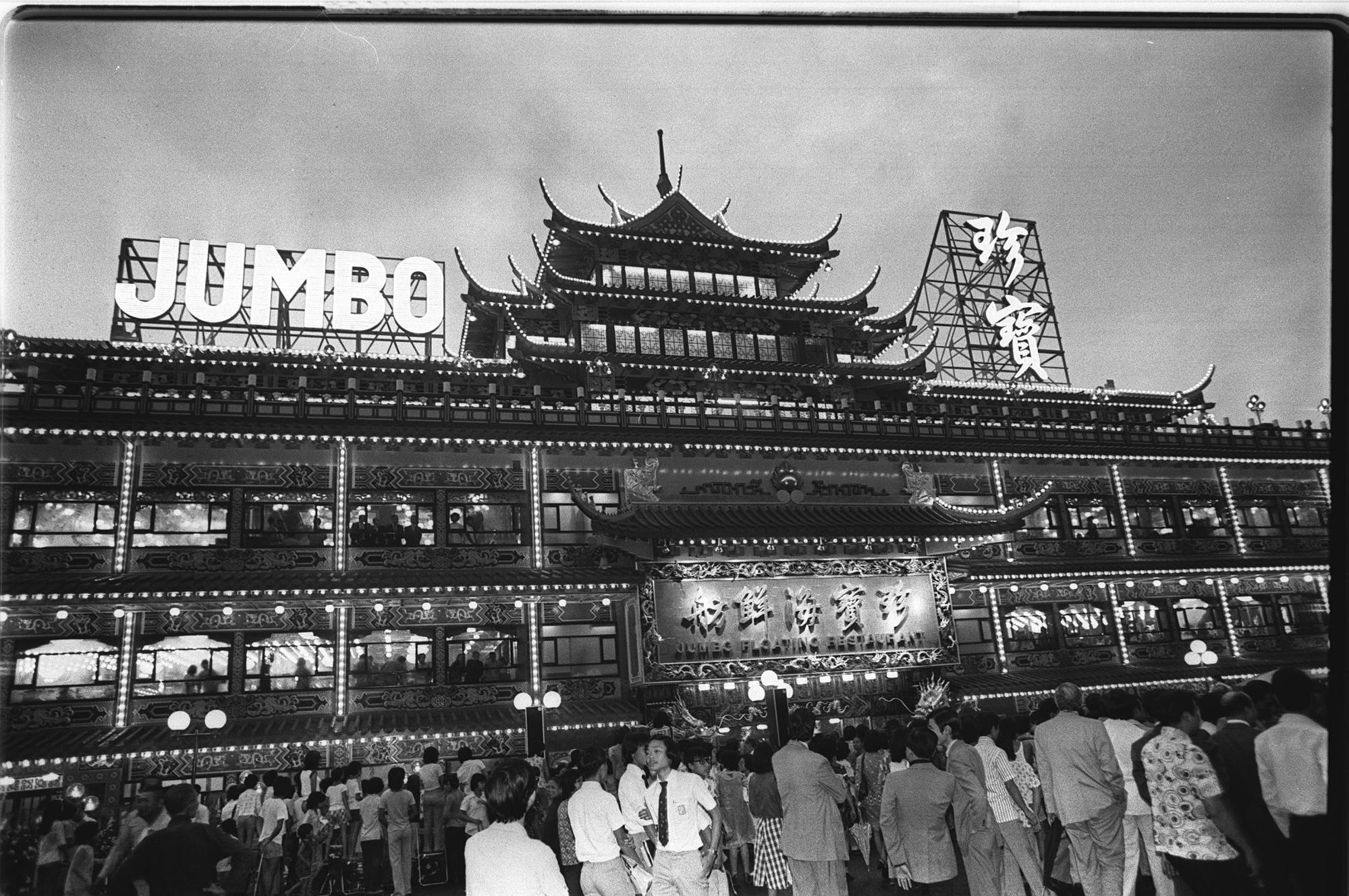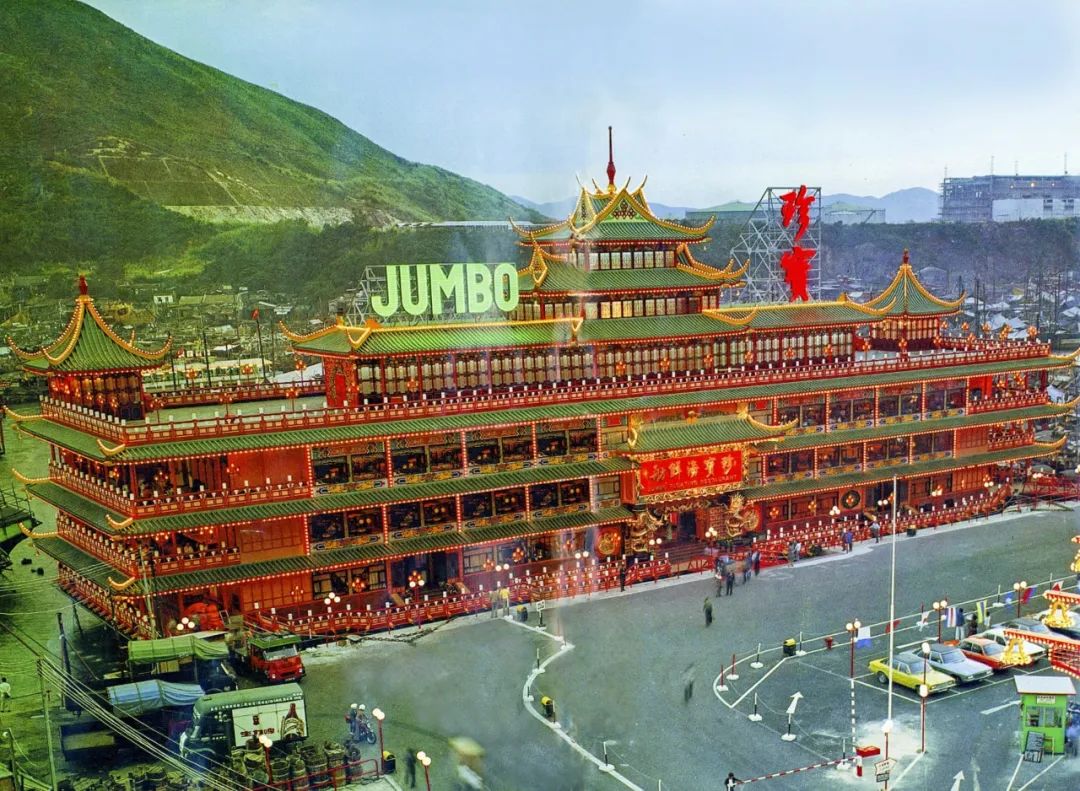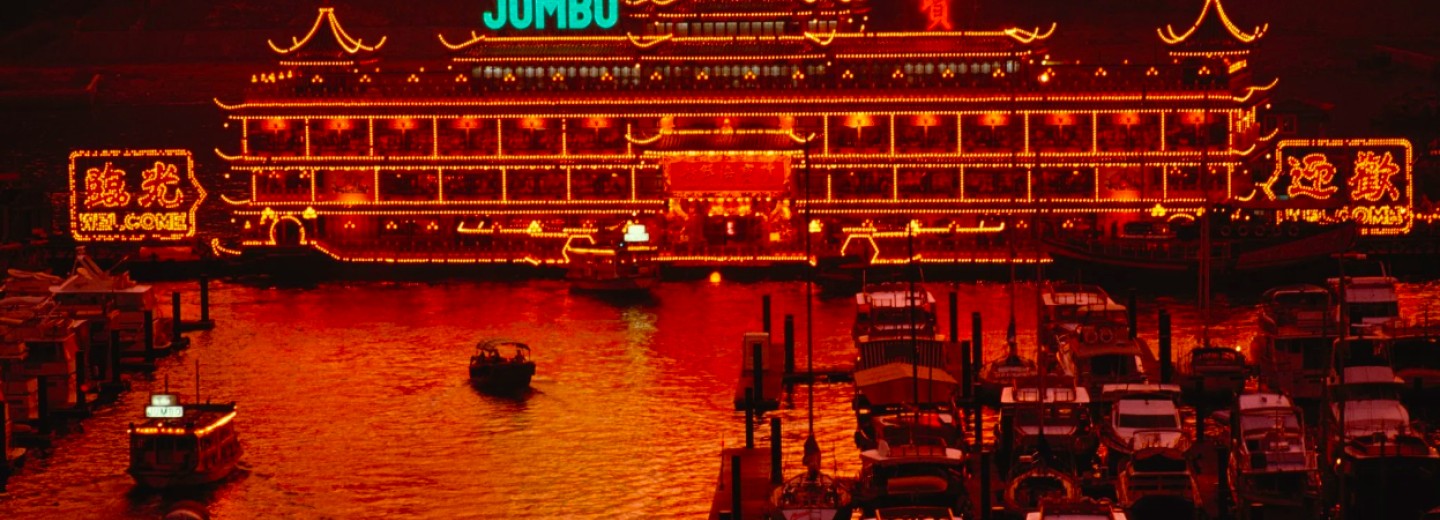Jumbo
You may have read of the departure and sinking of Hong Kong’s famous floating Jumbo Seafood Restaurant. Bruce Lee, among many others, made movies there. More than a restaurant, the Jumbo became a cultural icon of Hong Kong, capturing the mind of locals and visitors alike. Here is some of its history. As we foreshadow at the end of this piece – the history may not be quite over yet. Read on….
Beginnings

Aberdeen Jumbo Seafood Restaurant has a history of more than 45 years. Construction began in 1970, but a fire burned it down in 1971, killing 34 people and injuring more than 40. James Clavell, in his novel, ‘Tai-Pan’, dramatically described a fictional view of the event. It became a movie starring Pierce Brosnan. The photo is from the movie.
Opened in 1976 by Stanley Ho, the casino magnate from Macau, the Jumbo restaurant became a popular tourist attraction. It closed in 2020 at the start of the pandemic. In the past two years Jumbo’s parent company, Aberdeen Restaurant Enterprises, said the restaurant had made a net loss of HK$100 million (£10 million). It could not afford to maintain it or find a new owner before its licence was due to expire this month.

History
The floating restaurants – Jumbo, Tai Pak and Sea Palace – were relocated to Sham Wan in Aberdeen typhoon shelter in southern Hong Kong 1978 due to reclamation in their previous locations.

After Jumbo acquired the other two in the 1980s, Tai Pak’s facility was placed next to Jumbo. Sea Palace was then successfully relocated twice. It was sold and moved to Manila Bay in the Philippines in 1999 and rebranded as the Jumbo Kingdom, Manila, which closed in 2008. Three years later, it was given to Qingdao in mainland China and spent eight days at sea on the deck of a semi-submersible vessel. But it was reportedly never used and remains docked in the city.
The good times
Anchored among small fishing boats and luxury yachts in the Aberdeen typhoon shelter, the 76-metre-long restaurant had three storeys with 45,000 square ft of space. It could accommodate up to 2,300 diners.
In its heyday, along with the other two floating restaurants, the tourist attraction drew in many visitors from around the world, including Britain’s Queen Elizabeth and film stars such as Tom Cruise and Chow Yun Fat. It also appeared in films such as The Man With the Golden Gun (1974) from the James Bond series, Contagion (2011), The Protector (1985), The God of Cookery (1996) and Infernal Affairs II (2003).

Other than its banquets, one of the restaurant’s main attractions was its sumptuous design resembling an imperial palace from the Ming dynasty. Its red, green, and gold exterior was embellished with dragons and pagodas, while its interior was adorned with lavish paintings, ceramics, and motifs.
The restaurant suspended operations in 2020 as it suffered an accumulated loss of HK$100 million due to the Covid-19 pandemic and the social unrest in 2019. The company announced in late May that the restaurant would move away from Hong Kong for repairs and storage due to a lack of funds for maintenance, adding that it would wait for a new operator to take over. It said millions had been spent annually on inspections, repairs, and maintenance, calling it a “heavy financial burden” under the current economic environment.
After the company’s shock announcement, many Hongkongers expressed regret, calling on the government to save the restaurant, while lawmakers urged authorities to provide support to keep the Jumbo afloat. Nevertheless, the restaurant eventually bid a permanent farewell to Hong Kong and began its fateful journey on June 14.
What happened next

Sadly, the Jumbo’ sank on the way to Southeast Asia. Hong Kong maritime authorities have asked the owner of the Jumbo Floating Restaurant to submit a report on its capsizing in the South China Sea, revealing they had earlier given approval for the vessel to be moved to Cambodia.
The Marine Department said it had not been told of the sinking before the company announced it on Monday. Conspiracy theories have swirled that human error was a factor in the case.
The firm said the vessel had sunk 1,000 metres (3,300 feet) under the sea which made it “extremely difficult” to salvage. A spokesman from Aberdeen Restaurant Enterprises told the Post he had no information on the financial loss or whether a salvage operation would continue.
Farewell, Jumbo.
Or is that ‘maybe not farewell?”
In response to media enquiries on the Jumbo Restaurant Boat, a spokesperson of the Marine Department (MD) of Hong Kong said today (June 23): “MD had not received any notification from the ship owner prior to media reporting about Jumbo’s sinking. After learning about the media reports, MD immediately requested Jumbo’s owner to submit a written report. Today, MD received the written report from the agent appointed by Jumbo’s owner. According to the information provided by the ship owner, on the night of June 18, when Jumbo was being towed by ocean-going tugboat “JAEWON 9” in the vicinity of Xisha Islands in the South China Sea, Jumbo capsized due to adverse weather. At present, both Jumbo and the tugboat are still in the waters off Xisha Islands. The ship owner will continue to follow up on the incident. Ends/Thursday, June 23, 2022”
We will keep readers up to date with the latest news.
Sources include HK01, Hong Kong Free Press, South China Morning Post.
Worked on the article:

Wanlikhang





